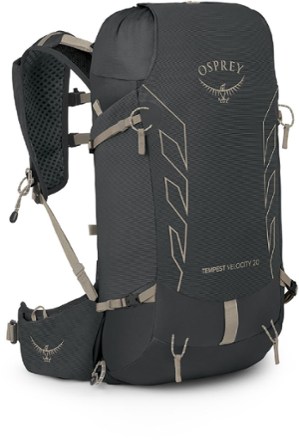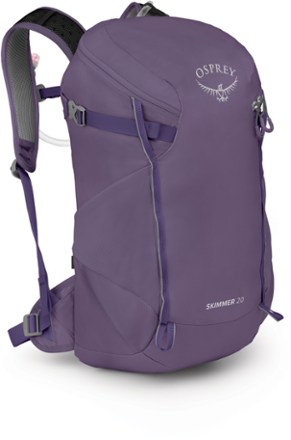We've only got one planet. That's why it's important to take care of it all year long, no matter what we're doing. And that's what the principles of Leave No Trace (LNT) are designed for: to minimize our human impact as we recreate outside.
But once the mercury drops and the snow starts to fall, things may feel muddled. Playing outside in the winter is growing more popular as folks pick up new activities like cross-country skiing, snowshoeing, winter hiking and backcountry skiing. This increased recreation means it's even more important to tread lightly outside so that we protect our beautiful landscapes and the wildlife that lives in them.
So, how do you practice LNT while playing in the snow? We reached out to Hannah Olson, a Minnesota-based REI Day Guide who has worked and played in chilly temperatures for the last 11 years. Drawing on her experiences as a guide and recreator, she helped us adjust the seven LNT principles for snowy adventures.
Prepare, Prepare, Prepare
Planning ahead for any outdoor adventure is one of the first considerations for LNT, regardless of the season. Preparation can help you avoid crowded areas, understand permit requirements and research special regulations for the place you'll be visiting. Planning ahead also makes it easier to minimize your trash because you can be strategic about how you package items—for instance, combining dry dinner ingredients into a single reusable pouch instead of several.
In the snow, this principle becomes second nature for many. "Most people already prepare for cold temperatures in the winter," Olson says, noting that many people inherently think ahead when they know they need to stay warm.
But this extra prep is for a good reason: Proper planning is critical in snowy conditions. Use this time to look into any winter-specific regulations, limited operating hours or changes in trail access (trails that are open in the summer may not be during winter and early spring). Educate yourself on the snow conditions and carry any safety equipment—like avalanche beacons, shovels, probes or other gear—specific to your outdoor activity. It's always a good idea to bring a map and compass (and know how to use them), but this is especially important during the winter when rock cairns and tree blazes are often buried in snow. Plus, snow-blanketed landscapes can make it tougher to orient yourself.
And, don't forget to pack snacks and water like usual. It's easy to forget hydration when it's chilly outside, but drinking warm water will help you stay cozy from the inside out.
Seek Out Durable Surfaces
Regardless of the season, it's important to hike, bike and camp on durable surfaces. This means that you want to avoid riparian areas by camping at least 200 feet from lakes or streams. You should also camp in established campsites or on surfaces that aren't easily damaged, like gravel, rock, dry grass, and even snow and ice.
Snow and ice actually create some of the most LNT-friendly surfaces because they are pretty tough to ruin. Deep snow often protects the plant life beneath it, and you can easily stamp out a campsite in the snow using your snowshoes or skis. "Snow is more durable than tundra plants or anything else," Olson says. In addition to following the warm-weather LNT principles, be sure to pitch camp away from steep slopes, avalanche paths or cornices. If the snow cover is patchy with exposed vegetation, look for a previously used campsite rather than moving rocks or vegetation to make a new one.
Because all that snow and ice will eventually melt, it's especially important to pack out anything you bring to your campsite. Otherwise, "that stuff ends up in the water later," Olsen says.
Pack Out Your Waste
Everyone talks about poop in the backcountry (especially where and how to do it), but no one wants to stumble upon a fresh pile of it. The general LNT-friendly approach is to bury your solid waste in a cat hole that is 6- to 8-inches deep and at least 200 feet from water, campsites or trails. You should always pack out everything else—toilet paper, wipes, hygiene products and food wrappers—and discard them when you return home.
However, in the winter, the rules on going number two change a lot. "You need to pack out most things," Olson says. And this includes your poo.
Because the ground is often frozen, it's much harder to dig a cat hole. And if you just dig one in the snow, you're basically leaving your waste there to be discovered in the spring. Gross. To avoid this, pack out all solid waste in a WAG bag (kind of like doggie bags for humans), or another type of waste disposal system that will help you get your poop safely to the trash.
Of course, camping produces waste beyond just what comes from our bodies. Don't forget about your food wrappers and scraps; bring those back to the car, too. Use biodegradable soap sparingly if you need to wash your dishes, and scatter the strained dishwater.
Related reading: How to Go to the Bathroom in the Woods
Minimize Campfire Impacts
Campfires can be polarizing. Safety and warmth aside, many outdoor enthusiasts have strong sentimental bonds with the idea of a campfire while enjoying the Great Outdoors. But these fires can scar the earth even when contained, which is why LNT suggests carrying a camp stove and lantern and using fires minimally in the backcountry. When fires are permitted, use an established fire ring, a pan or a mound to contain the lasting impacts of your fire.
In the winter, the same guidelines apply. However, Olson notes that campfires can be easier in the snow because the ice provides some protection for the earth. They can be a great alternative if you can't find or dig out a known firepit—though she says that backcountry fires should be created sparingly. If you choose this option, there are a few rules to follow: Make sure the ice or snow is thick enough to shield the ground from the fire, keep the fire small and monitor it to ensure it doesn't burn through the ice or snow and scorch the earth.
Also, try to only burn dead, downed wood rather than cutting branches from live trees. Once you're done enjoying the fire, make sure to put it out and scatter the cool ashes and any unused firewood away from camp. Never burn your trash.
Leave What You Find
Hiking trails and camp areas see a lot of traffic, so LNT suggests that people always leave what they find. This means you shouldn't take cultural artifacts, rocks or plants (which can be tough if you're recreating with small children). Don't build new structures like log furniture or dig large trenches that others will find later. Ultimately, the goal is for the area to look the same—or better—after your visit.
Fortunately, this one may be easier in the winter because leaves, rocks, plants and other parts of nature are less visible: Pine cones and rocks are often covered with snow, and trees have lost their leaves for the season. Building shelters like snow caves or snow breaks are perfectly fine in many places (as always, check local regulations) but remember to dismantle them before you leave.
Respect Wildlife
While we may be visiting these beautiful places, the local wildlife calls them home. That's why it's so important to minimize human-wildlife interactions. To do this, LNT recommends observing animals only from a distance and never feeding or following them. To further protect them, store your food and trash in places animals can't access (bears don't really need your chili mac). That way, they won't become accustomed to human snacks and start returning for more. LNT also asks that outdoor recreationalists avoid wildlife at stressful times, such as mating season.
Winter is a stressful time for animals because food is scarce, making them incredibly vulnerable. Because of this, follow the LNT guidelines as closely as possible. "Wildlife sometimes gets forgotten in the winter," Olson says. "Because bears aren't a typical problem, people sometimes forget to protect their food against other active critters. Keeping your food safe keeps them safe."
Be a Good Neighbor
All of the other LNT principles can be summed up by this final guideline: Be considerate of other visitors. We all come to these wild spaces to enjoy ourselves and this majestic planet we call home. Take care of each other; yield to other hikers on the trail; control your pets; and move off the trail when you're taking a break.
In the winter, this also means that snowshoers should tromp away from the Nordic skiing tracks so they don't disrupt them. If you're a hiker, try to avoid stepping in either the ski or snowshoe tracks.
And, don't forget the visuals of what you leave behind—like urine. "We rely on snow as our water source in the winter. If everything has dots of yellow snow, that's both unsightly and disgusting," Olson says. I It's also unhygienic. When you can, try to designate a "pee zone" to keep all that yellow snow in one place—and away from drinking water.
Related reading: Winter Trail Etiquette




